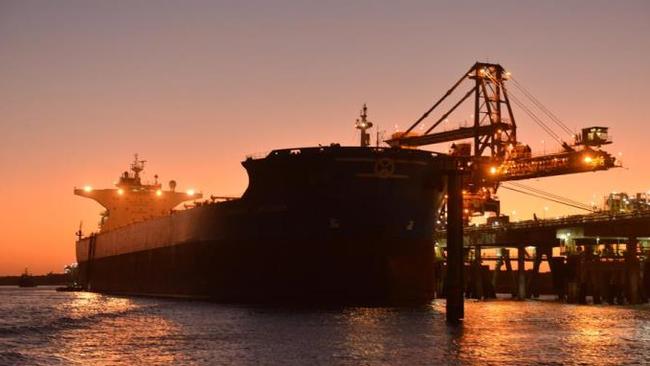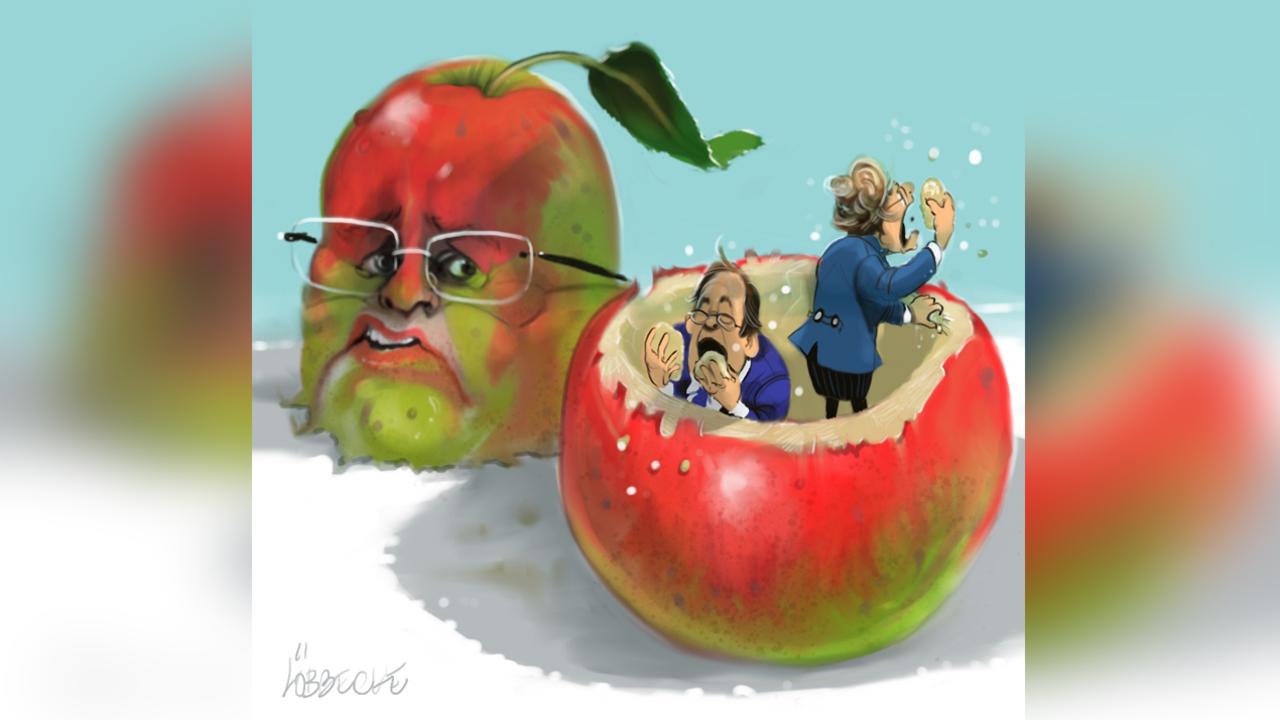
With commodity prices plummeting, the pressures on our resource sector seem certain to intensify. But despite the damage that will inflict on commonwealth revenue, and hence on the forecasts of the budget bottom line in next week’s mid-year economic and fiscal outlook, it would be a serious mistake to write off mining’s contribution to the Australian economy.
And it would be an even greater mistake to ignore the enduring role of our vast resource endowment in shaping this country’s comparative advantage and supporting its prosperity.
To say that is not to belittle the severity of the shocks the resource sector faces. Prices for iron ore and for metallurgical coal are about 80 per cent lower than they were at their peak, while those for thermal coal are down by nearly 70 per cent. And the price of liquefied natural gas, which is tied to that for oil, has dropped by more than two-thirds.
Nor is there much prospect of those prices recovering quickly. Although extremely hard to call, world economic growth, which basically determines commodity prices, seems likelier to disappoint expectations than to exceed them. Even in the US, which has been the bright spot on the global scene, most forecasters expect fourth quarter gross domestic product to be just 2.1 per cent higher than it was a year ago.
As for Europe and Japan, a return to sustained expansion remains elusive, despite ever more desperate measures by their central banks. And as China struggles with an overvalued exchange rate, high levels of indebtedness and widespread excess capacity, none of the locomotives that can power the world economy is pushing ahead at anywhere near the speed needed to lift commodity prices out of the doldrums.
Little wonder, then, that investment in Australia’s resources is winding down. Having risen nearly eight-fold in the period from December 2004 to December 2012, capital expenditure in mining has since fallen by $10 billion, reducing mining investment’s share of GDP from a peak of 7.9 per cent to 4.5 per cent. And as major LNG projects are completed, that share is likely to drop further, perhaps reaching 2 per cent of GDP at the end of next year.
The investment phase of the resource boom is therefore nearly over. But its legacy is long-lasting, and it is already bolstering our economic performance. At the heart of that legacy is the unprecedented expansion in mining’s capital stock. With investment in mining growing, at its peak, at a compound rate of 8.5 per cent a quarter, mining’s net capital stock, measured in inflation-adjusted terms, has increased by about $370bn since 2003-04, taking the mining industry’s share of Australia’s total capital stock from an average of 5.3 per cent in the years immediately preceding the boom to 12.6 per cent today.
There is, in other words, $17,000 more capital in mining now, per head of the Australian population, than there was barely a decade ago. But while the mining capital stock rose during the boom by 230 per cent, mining output increased by only 75 per cent. As a result, productivity — which is basically a measure of the output secured per unit of input — nearly halved, with two-thirds of that fall occurring after 2006-07.
In part, the decline in mining productivity reflected the sheer pace at which projects were being undertaken, and the difficulties were aggravated by the fact those projects often involved bringing into production resources that were both far removed from existing infrastructure and inherently hard to access and extract.
However, productivity mainly fell because capacity expansion in mining occurs in large, indivisible lumps, such as new rail lines, which are dimensioned to handle output growth for many decades. In the short run, that imposes a substantial financial penalty on miners; but with the new capacity in place, they can increase production at low incremental cost, all the more so once they shake off the poor management and work practices that were tolerated when prices were sky-high.
The most recent data shows that process of putting the additional capital to good use is now well and truly under way.
Nothing highlights it better than last week’s release of the September quarter national accounts, in which mining was the largest single contributor to economic growth, accounting for almost half of the quarter’s 0.9 per cent growth rate. And iron ore — where Australia is truly at the forefront of mining technology — led the pack, with its value added rising by 8.2 per cent.
Nor did last week’s news end there, as the Australian Bureau of Statistics also released its annual estimates of productivity growth, which showed that mining’s multifactor productivity (which measures output per unit of all inputs combined) rose a staggering 5.5 per cent in 2014-15 as strong increases in output were secured from a shrinking labour force.
For sure, a considerable distance remains before productivity levels are back at pre-boom highs; but it is equally certain that Australian mining is positioning itself for the long haul.
It is only to those unfamiliar with this country’s economic history that that would come as a surprise. Rather, it conforms closely to the pattern that has prevailed since European settlement, with our economy periodically experiencing bursts of growth as sudden upswings in world demand brought greater parts of the continent’s vast natural endowment into production.
In each of those growth bursts, large inflows of capital and labour have swollen the availability of factors of production; and, like a python that swallows a pig, it has always taken some time for those factors to be fully digested and efficiently used. Many of the income gains from capacity expansion during successive resource booms were therefore secured well after the booms themselves; what made that possible was the ability of our primary exporters to sharply increase productivity as low prices dragged on.
Of course, doing that has never been easy. But fully exposed to international competition, and deeply enmeshed in international trade, Australia’s primary exporters have had strong incentives to innovate. For example, once the price spike of 1950-51 collapsed, falling wool prices slashed growers’ incomes just as tariffs and import licensing were driving up the price of their inputs; but the widespread adoption of selective breeding, pasture improvement and myxomatosis reduced growers’ costs sufficiently to induce a 60 per cent rise in the sheep population, underpinning Australia’s export earnings until the mining boom of the mid-1960s inaugurated a new spurt of rapid growth.
Yet no matter how often that pattern repeats itself, Australians seem determined to ignore it. Instead, the end of each period of high commodity prices provokes an epidemic of brooding pessimism about our resource industries, along with a no less virulent wave of belief in their replacement by the “industries of the future” — be it cars and chemicals in the postwar years, computer chips and video recorders in the 80s and 90s, or apps today.
Seen in retrospect, the errors seem laughable. It is, for example, remarkable that the Vernon report, produced by a high-powered commission of inquiry in 1965, delivered a gloomy assessment of the prospects for Australia’s resource exports exactly as it was becoming apparent that a mining boom, on a scale with few parallels until then, was getting under way.
Treasury promptly pointed out the flaws in the report’s analysis, noting that even were future export prices “problematical”, as the Vernon report claimed, the historical record showed that increases in productivity and production in the resource industries “can more than offset the effect on export proceeds of falling prices”.
Governments that underestimate the importance of our primary exporters’ ability to adjust can impede it instead at high cost. The Fair Work Act is a case in point; and Bill Shorten’s opposition even to the reforms the Gillard government’s review of that legislation recommended means that it is now often easier to shut a mine than to put its work practices on a sustainable footing. As for our environmental policies, efforts to streamline approvals have made little headway, just as mining’s opponents escalate their use of American-style adversarial legalism.
The damage that imposes could be felt for many years. And it would, of course, extend well beyond mining as inefficient regulation, too high taxes and poorly managed infrastructure hinder the development of other industries as well — including those that would otherwise take up the slack as higher productivity allows mining’s call on capital and labour to fall. But with the sellers’ market over, mining is both especially vulnerable and particularly important.
After all, no matter how great the national fascination with information technology may be, it is a fact of life that natural resources have long been and remain Australia’s Silicon Valley: the area where we have exceptional skills in developing and applying innovations, the specialist financial institutions that can assess proposals and fund start-ups, and the complex of service industries that can help engineer, implement and operate projects that are truly at the technological frontier. Moreover, because those assets so closely match our unique resource endowment, it is Australia, rather than the rest of the world, that captures the bulk of the return from innovation, even when the technical know-how itself seeps into the public domain.
None of that means another mining boom is around the corner; it plainly isn’t. On the contrary, the depressed prices and the pain they cause, including to the budget, are not about to go away. But nor will the economic realities: China, whose per capita income is still barely a quarter of that in the US, will continue to industrialise and become more urban, as will India and a host of emerging economies that stretch from Turkey to Indonesia; and Australia’s natural resource endowment, which is the bedrock of our comparative advantage, will fuel that growth by enabling them to obtain the primary products they need with less drain on their other available resources, much as it helped underpin the economic development of Britain in the 19th century and, more recently, of Japan.
In that sense, comparative advantage is still destiny; and as the great economic historian Noel Butlin wrote, with some irony, shortly after myxomatosis had come into widespread use, it is a comparative advantage made all the more valuable by “Australians’ remarkable facility for pulling a rabbit out of the hat”.
Yet as this paper, under Chris Mitchell’s editorship, has so often stressed, we also have a knack for then letting that rabbit go, succumbing, Micawber-like, to a reliance on something “turning up”, while letting rigidities fester and poor policies persist. With the ugly phase of the commodity cycle upon us, it will take more than Mr Micawber’s cry of “Nil Desperandum!” (Never despair!) to secure, from the resource investment boom that is now passing into history, the full dividend it can, and should, yield.



